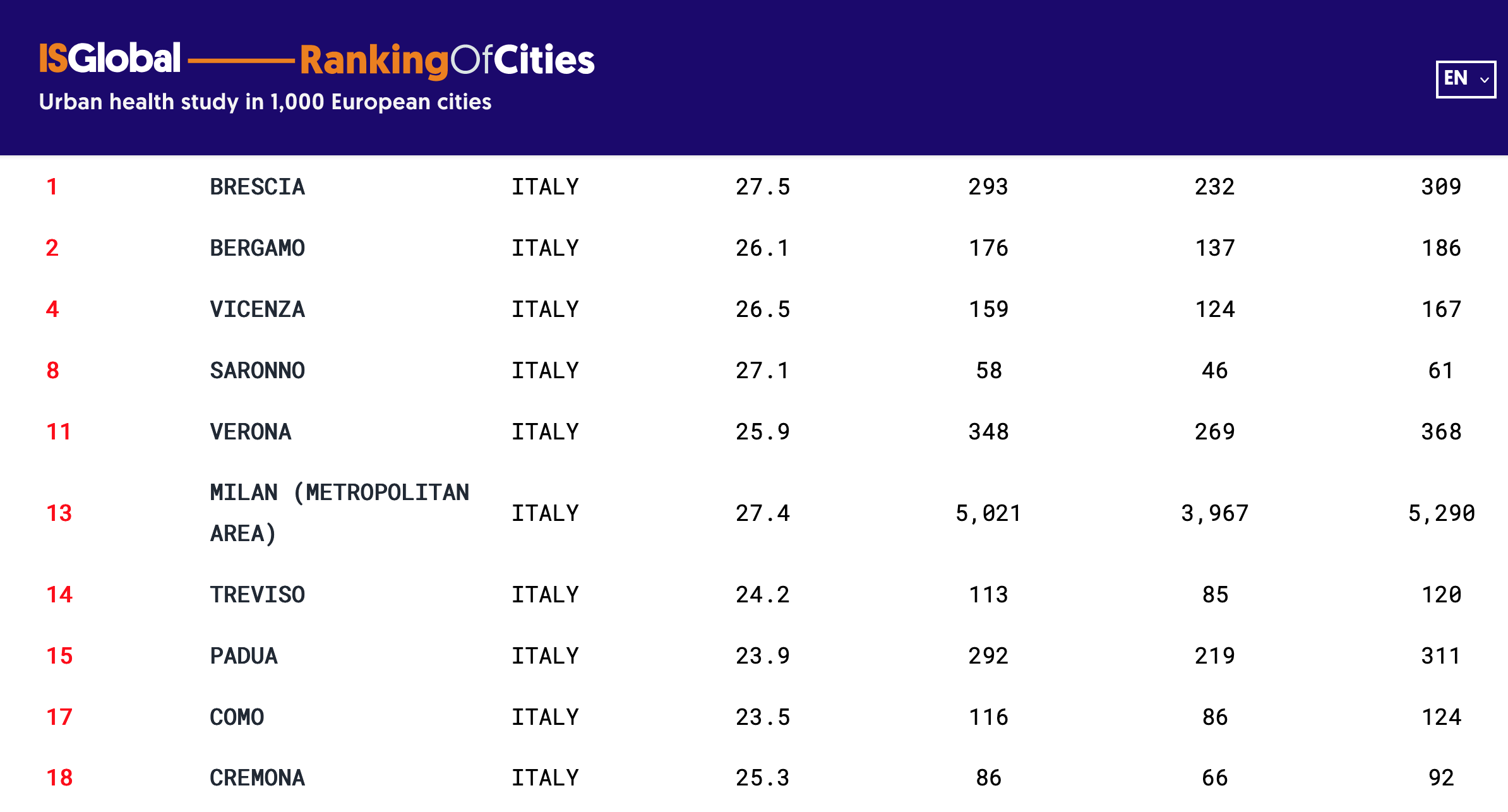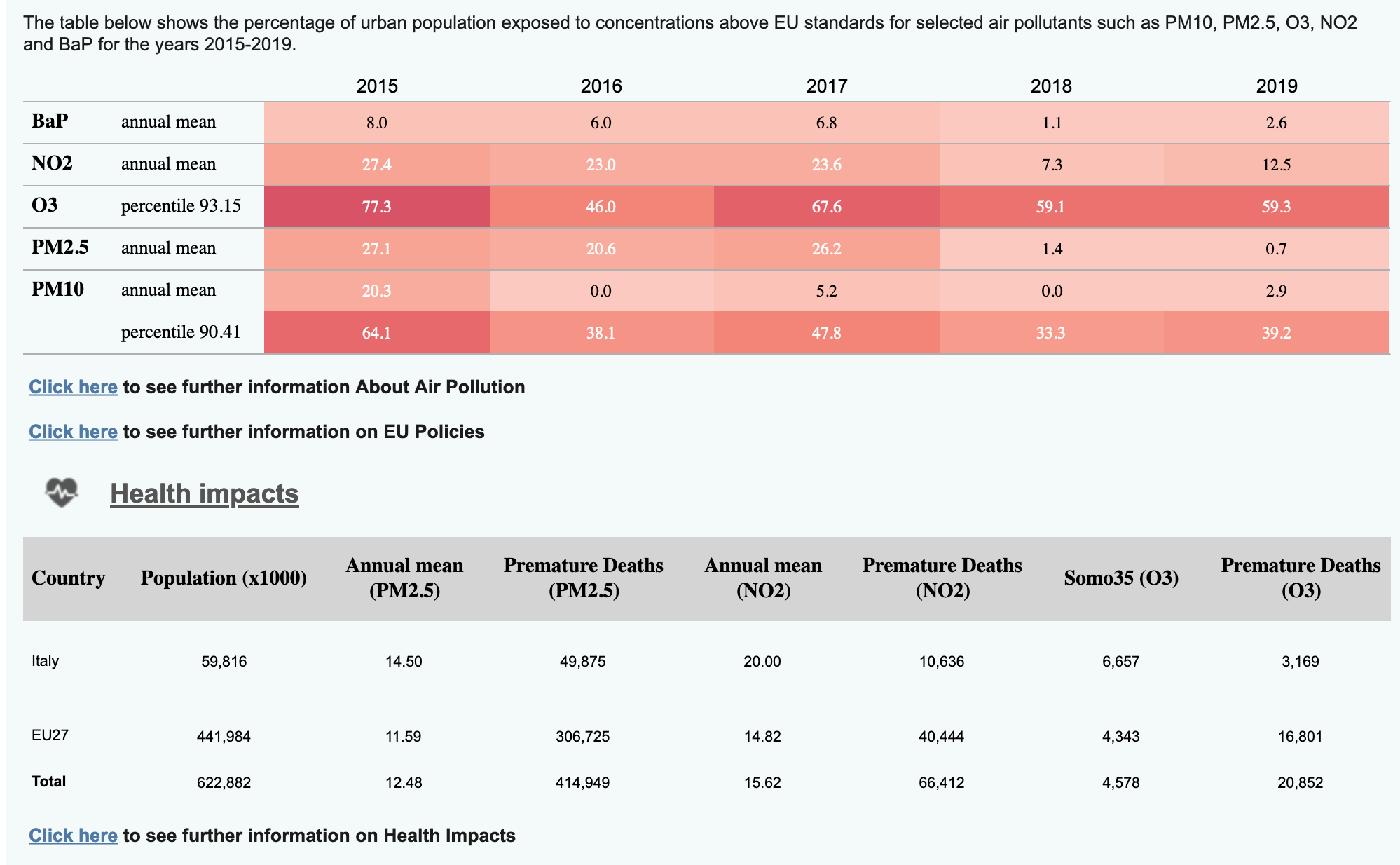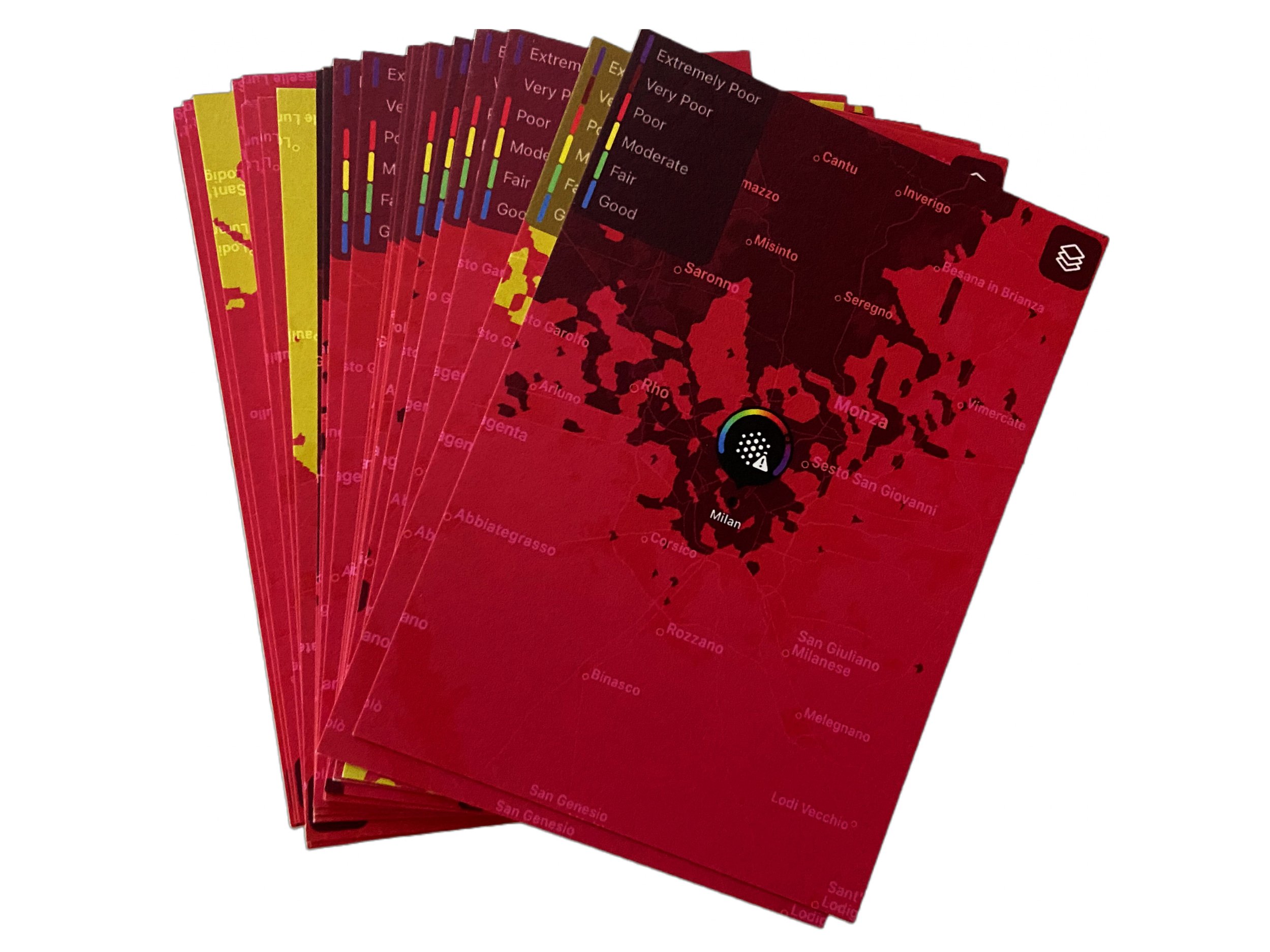MILAN IS POOR (2022-ongoing)
Ongoing digital performance on Twitter + mail art
digital image 828 pixel x 1792 pixel (screenshot)
32pt paper, 4.13” x 5.83” (postcard)
The so-called Belpaese is one of the most polluted countries in Europe. Air quality is abysmal, especially in the “advanced”, “wealthy”, “post-industrial” regions of the North. According to the annual Mal’aria report released by Legambiente in 2022, not a single major Italian city met all the values suggested by the World Health Organization for PM10, PM2.5 and NO2*: 102 cities out of 102 are, based on official metrics, toxic, unhealthy, harmful, pestilential, poisonous. As a matter of fact, for the past twenty years, several Italian cities lead the infamous chart of Europe’s most insalubrious urban environments, with Milan, Bergamo, Brescia, and Vicenza in the top spots.
Scientists have long established strong, causal links between pervasive air pollution from burning fossil fuels and cases of heart disease, respiratory ailments and even the loss of eyesight. Interestingly, the institutions are not doing much to ameliorate this catastrophic state of affairs. In the best case scenario, their actions are palliative. According to a major study released by the European Environmental Agency in 2020 — which calls air pollution “the single largest environmental health risk in Europe” —, Italy ranks second after Germany for the number of preventable deaths due to air pollution. These data are remarkable, considering that in 2019 the overall number of people in Italy who died for causes related to air pollution was almost identical to the number of deaths attributed to Covid-19 in 2020, and yet nobody has ever called for a lockdown or, God forbid, for tougher restrictions of the most polluting cars and trucks**.
One may think that given the gravity of the situation — air pollution is among the leading causes of death among all clusters of the population*** — the authorities would do their best to ameliorate the ongoing catastrophe. In fact, the opposite is true. Their indifference and inertia, shared by a complete lack of interest by the mass media, is the default: ignore or deflect. In other words, the biggest problem related to air pollution in Italy is that it is not even perceived as a problem. This is true both for neoliberal “centrist” parties, like the Partito Democratico — which has been “managing” the city of Milan for several years — and the far-right Lega — which controls the region, Lombardy and is gung ho about building more roads (while neglecting basic maintenance for the existing infrastructure) and removing existing regulations related to air pollution (which are barely enforced anyway). Unsurprisingly, according to Lega Ambiente’s dire 2022 report, “Air quality policies [in Lombardy] are at a standstill: there has been no improvement in the last five years.” In Germany, the Green Party is one of the leading forces and environmentalism is a key concern for the population. In notoriously backward-looking Italy, the ongoing climate catastrophe does not even register. Why?
A possible explanation is provided by James Bridle in New Dark Age, who writes:
At 1,000 ppm, human cognitive ability drops by 21 per cent.33 At higher atmospheric concentrations, CO2 stops us from thinking clearly. Outdoor CO2 already reaches 500 ppm regularly in industrial cities: indoors, in poorly ventilated homes, schools, and workplaces, it can regularly exceed 1,000 ppm – substantial numbers of schools in California and Texas measured in 2012 breached 2,000 ppm.34 Carbon dioxide clouds the mind: it directly degrades our ability to think clearly, and we are walling it into our places of education and pumping it into the atmosphere. The crisis of global warming is a crisis of the mind, a crisis of thought, a crisis in our ability to think another way to be. Soon, we shall not be able to think at all. (pp. 86-87).
Due to pervasive, permanent, staggering levels of pollution, people living in Lombardy are clearly unable to think straight. Their cognitive abilities are utterly compromised.
Starting in February 2022, we began collecting screenshots of the weather app of the Apple iPhone, which includes daily air quality values based on the European Union Quality Index (EAQI) provided by BreezoMeter. Day after day, night after night, come rain or shine, the data show that the air quality in Milan ranges from “Poor” to “Very Poor”. Chromatically, this is rendered with shades of crimson red and maroon. The irony is that Milan, one of the wealthiest cities in Europe is, in reality, poor — often extremely poor — when it comes to the most important indicator of all: the state of the environment. Truth be told, Milan is not only poor, but poisonous. On a daily basis, we posted a couple of screenshots on the Twitter account @matteobittanti; the performance is ongoing. In July 2022, we printed out a selection of screenshots from the series as postcards and we snail mailed them to the powers that be: The President of the Italian Republic, Sergio Mattarella; the Minister for Ecological Transition, Roberto Cingolani, the Mayor of Milan, Giuseppe Sala; Lombardy Region’s President, Attilio Fontana; the Director of the Triennale Museum, Stefano Boeri**** among others.
These “postcards from Milan” are a reminder that this city (this region) is consistently in the red zone. And yet, inertia dominates.
COLL.EO, 2022
According to Lega Ambiente’s 2022 report, "Air quality policies [in Lombardy] are at a standstill: there has been no improvement in the last five years." - link
Notes
*That is, an annual average of 15 micrograms per cubic meter (μg/mc) for PM10, an average of 5 μg/mc for PM2.5 and 10 μg/mc for N02. The Lombard capital in 2021 recorded an annual average of 39 µg/mc against a WHO value of 10 µg/mc and the city of Turin 37 µg/mc. As for nitrogen dioxide (NO2), on an average day, Milan and Turin exceed the current limits by a factor of three.
** Several scientific studies also suggest ‘Compelling’ evidence that air pollution worsens the impact of coronavirus on the body. Interestingly, the highly polluted Norther regions of Italy, have had some of the highest number of Covid-19 related deaths. This connection has been largely ignored or downplayed by both the authorities and the media. For more information, see The Guardian and Stanford News.
*** Air pollution caused by the burning of fossil fuels such as coal and oil was responsible for 8.7m deaths globally in 2018, a staggering one in five of all people who died that year according to a leading study by researchers Karn Vohra, Alina Vodonos, Joel Schwartz, Eloise A. Marais, Melissa P. Sulprizio, Loretta J. Mickley, “Global mortality from outdoor fine particle pollution generated by fossil fuel combustion: Results from GEOS-Chem”, published in Environmental Research in April 2021. Additional studies suggest a strong link between air pollution and increasing rates of depression and Alzheimer’s disease in Western and Southern Europe.
**** Stefano Boeri, famous for adding plants on the facade of luxury condos reserved to the 1% as a solution to climate change. Interestingly, Triennale Museum’s main Institutional Partner is Italy’s biggest contributor to air pollution: fossil fuel giant ENI. The term “divestment” is conveniently unknown among the local élite institutions. The biggest irony of all is that ENI sponsored Triennale’s major exhibition about climate change, Broken Nature, curated by Paola Antonelli. File under: greenwashing.
Triennale Museum’s list of "Institutional Partners”, 2022. link
















